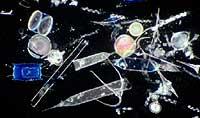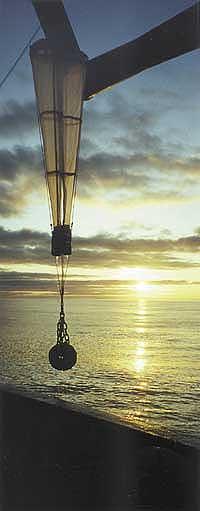Diversity in the deep sea
Species diversity
Most studies on the diversity of living beings have been conducted with terrestrial beings. These studies show that many times the greatest diversity occurs in living beings of medium production. Production should be understood as a relationship between the energy received and the biomass obtained.

However, it is questioned whether those models that relate diversity and production are also useful for smaller living beings, such as those that dominate the sea. According to some studies, small living beings do not follow patterns of large ones in terms of diversity.
However, in the studies carried out by the AZTI researcher with algae –phytoplankton– it is observed that phytoplankton reaches its greatest diversity with an average production.
To reach this conclusion, Xabier Irigoien has conducted a study on phytoplankton species with more than 350 samples obtained from the world's oceans. Although other models appear, the unimodal model that relates diversity and production is the one that most appears. In this model, when production is low, diversity is also low; when production is average, diversity is high; and when production increases, diversity is again low. Therefore, the model has a triangular shape.
In view of this, it can be thought that some of the models used in terrestrial ecology can also serve marine ecology.
Why a unimodal model?

In the case of phytoplankton, there are many reasons that justify the greatest diversity with the average production: history of the community, distribution of the homes, competition in the obtaining of food or resources, relationship between competitors, abundance / shortage of food, size of the algae, etc. For example, on the coast, if the waters are rich, productivity will be high, but there will be many predators. Consequently, only the most prepared phytoplankton species to combat predators will remain and diversity will be reduced. However, if the waters do not have food, the phytoplankton species that drop their productivity and survive will be rare and scarce. The greatest diversity of phytoplankton occurs when food is moderate, that is, when productivity is average.
In addition, this model is even more interesting when analyzing zooplankton. Zooplankton feeds on phytoplankton and the Irigoien study shows that the diversity of both is unrelated. This is not very common in living beings on earth, since when the diversity of dams is great there are more types of predators.
The difference between marine and terrestrial species can be the size of a living being that serves others. In fact, phytoplankton is very small and the great complexity of marine hydrodynamics.
So what delimits the diversity of zooplankton? According to the AZTI researcher, as with phytoplankton, competition for food and resistance to predators are key. Therefore, the theories of ecology continue to have much to investigate about predator and prey, and perhaps, from the point of view of diversity, finally choose to distribute that pair.
www.ihobe.net
Buletina
Bidali zure helbide elektronikoa eta jaso asteroko buletina zure sarrera-ontzian











